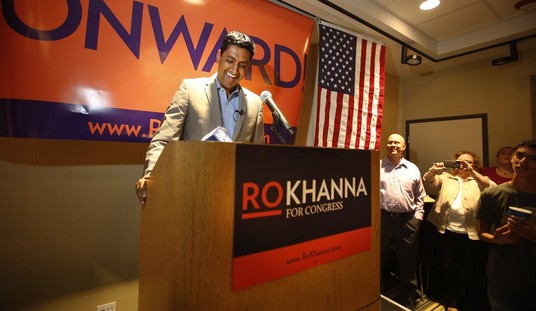Sixth inning? I thought we were at least in the stretch.
Does he mean the sixth inning of one of those pitiful seven-inning doubleheader games that MLB does now?
Whatever. I’ve been vaccinated. I’m already in the locker room having a beer.
Dr. Fauci tells Wolf Blitzer that we are at the "bottom of the 6th inning" in the fight against coronavirus pic.twitter.com/rWkyHZZqkH
— Daily Caller (@DailyCaller) May 4, 2021
A Twitter pal notes that if we’re two-thirds through the “game” and the pandemic’s gone on for 14 months, that must mean we have seven months to go per Fauci’s logic. And since he spoke elsewhere in this same interview about getting kids vaccinated by the end of the year, that … sounds about right. Plus, most scientists seem to think we’ll see another winter wave this year, milder than last year’s but a challenge for the unvaccinated regardless.
And many, maybe even most, of those unvaccinated will be found in red states. It pains me to say it, but given the vaccination rates, Republicans might be headed into extra innings.
Either way, Americans see the end of the game approaching:
Comparing the number of diners to an equivalent point in 2019 (when there was no pandemic), more and more people are clearly going out.
Nationally, there was an average 25% daily decline in seated diners in April 2021 compared to April 2019. That may seem like a large decline, but it’s significantly better than the 56% average monthly decline since the pandemic began in March 2020.
The 25% decline also represents the smallest decline in seated diners since the pandemic began. The best previous month was March 2021, when the decline was 33%. We’re seeing a clear trajectory of more Americans returning to their baseline behaviors when it comes to eating out.
The good news is people are getting back to normal! The bad news is that there may be more unvaccinated doing so than vaccinated.
My feelings about vaccine holdouts differ depending on why they’re holding out. I sympathize with those who fear unknown side effects. I understand those who are reluctant because they’re misinformed, as there’s a lot of misinformation about. But I have no patience for the people who are straight-up free-riding on the willingness of others to do the dirty work of getting vaxxed, expecting to reap the benefits of herd immunity. And there are people like that around:
Three weeks ago, when a Harris poll asked people “why you are not likely to get a COVID-19 vaccine as soon as one becomes available,” 13 percent of refusers selected this answer: “I don’t need to get it if enough people are vaccinated.”
Many refusers have made the same calculation about masks and other rules: They don’t need to follow such rules because other people are getting vaccinated. Two months ago, when half the vaccine refusers in a Harris poll said they had slacked off on taking precautions, they were asked why. Thirteen percent of the vaccine-refusing slackers selected the answer, “I am at lower risk of getting COVID-19 now since others are getting vaccinated.” A month later, when most vaccine refusers said they felt comfortable attending large gatherings and going into stores and gyms without a mask, one in six gave the same explanation. And when another Harris poll asked people how they planned to “get back to normal,” one-third of respondents who didn’t plan to get vaccinated chose a similar response: “Once enough other people get the vaccine, we will be at herd immunity anyway.”
Herd immunity’s supposed to help protect people who can’t get immunized for medical reasons, not people who simply can’t get motivated. The irony is that the logic is self-defeating: The more people hold off on getting vaccinated in the expectation that others will get their shots instead, the greater the share of the population will remain unvaccinated and the farther away herd immunity will be. Those are the people who’ll pay if a winter wave arrives — although, one would hope, many of them will have the sense to finally bite the bullet and get immunized this fall if we haven’t reached herd immunity by then yet.
I’ll leave you with the latest numbers from Israel, where they’re fully open for business yet experiencing an average of just 74 cases and two deaths per day. At their winter peak, they had nearly 85,000 active COVID cases. Today they have 1,259, a decline of 98.5 percent. All we need to do is follow their lead.








